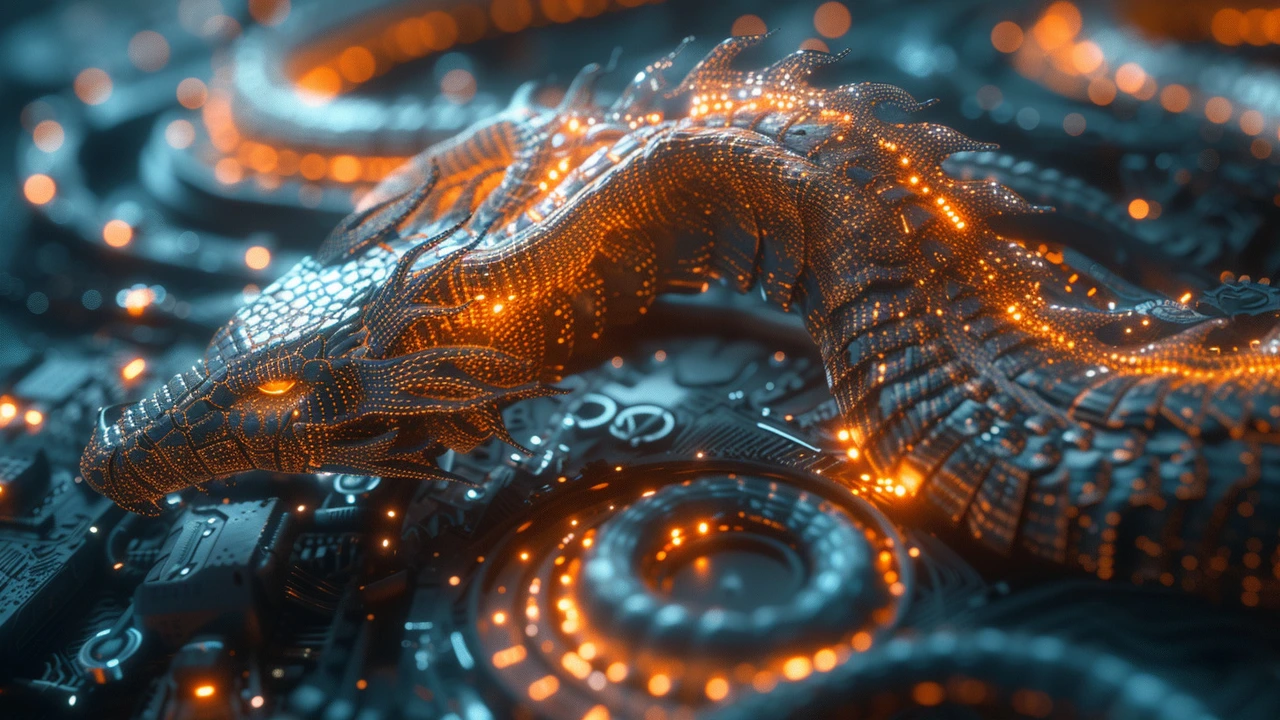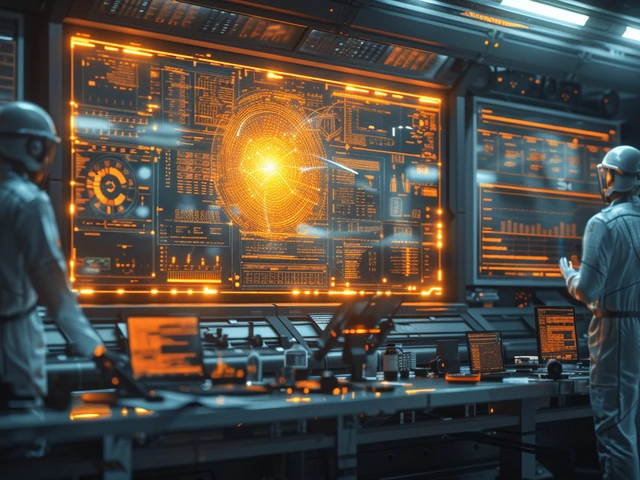Python for AI: The Future Starts Here

Python for AI: The Future Starts Here
Soaring with Python: A Flight into AI Development
In the grand cosmos of programming languages, there is much to explore, much to learn, and much to conquer. Among these celestial bodies, Python shines brightly as an easy-to-learn, versatile, and powerful language that is increasingly becoming the go-to option for Artificial Intelligence and Machine Learning. I, Silas, embark on this voyage not as an astronaut, but as a storyteller, narrating to you, dear readers, my journey through the Python galaxy and its AI constellations.
If there was ever a time when I seriously considered the idea of being able to talk to machines, it was when I first interacted with an AI assistant. Soon after, I became engrossed in building my own, and that's where Emily, my better half, entered the picture. Not by actually helping me build it, of course, but by constantly reminding me of real-life chores during my extended bouts of coding. If it weren't for Emily, my laundry would be piling up as we speak!
Python and Artificial Intelligence: A Symbiotic Alliance
We must start our story at the beginning, the undeniable fact that AI is inextricably linked with Python. Huddled in the rapidly expanding universe of AI, Python has been earmarked by the developer community as the tool of choice for its simplicity, efficiency, and adaptability. It is as if Python was designed with AI and Machine Learning developments in mind, catering to the needs and wants of the AI sage, providing essential intelligence to script a comprehensive instruction set for our machines.
We could argue that Python's AI-infused charm largely hinges on its extensive selection of libraries. From TensorFlow's deep learning capabilities to scikit-learn's host of ML algorithms, Python provides a cornucopia of resources to unleash the power of AI. And believe me, every time I find myself experimenting with a new Python library, I feel like a kid in a candy store (a rather nerdy candy store, you might say)!
Diving Deeper: Python's Built-In Advantages for AI
On the first day of my Pythonic journey, it was Python's syntax that brought a broad smile to my face. Once upon a time, I wrestled with verbose and stormy seas of Java code. The switch to Python was like docking my ship on a tranquil shore. The simplicity of Python, its readability, and less restrictive attitudes towards indentation were all a godsend, especially for a self-confessed caffeine addict like me.
Remember the time when machines were glorified calculators with a limited set of commands? Well, those times are gone, thanks to high-level languages like Python. As the AI world evolved, we needed a language that didn’t strain our human brains with low-level details. Python stepped up, offering a user-friendly interface and an easy learning curve, much like a compassionate teacher who simplifies concepts to make learning enjoyable. Whether you're a seasoned programmer or a newbie stepping into the AI realm, Python offers you something indescribable: joy in coding!
Conquering Challenges: Python's Role in Future AI Developments
The path to the future isn't always simple or straight. But the fascinating part is that Python, like an eager companion, is evolving and expanding, seemingly ready to tackle any obstacles that come its way in the world of AI. The speed and the susceptibility to mobile environments are two areas where Python was facing scrutiny. But with the advent of JIT compilers like PyPy and the growth of platforms like Kivy, Python is showing its resilience and adaptability.
With the rapid growth and development of AI technologies, Python's expansive frameworks and libraries become even more relevant. For instance, if you're diving into a Natural Language Processing Project, NLTK (Natural Language Toolkit) or Spacy can be your best allies. If Machine Learning excites you, Scikit-learn or PyTorch can be your guiding light. I fondly remember the feeling of victory (and relief) after I successfully coded my first Neural Network using TensorFlow. Emily, as always, kept our living room (my impromptu office) stocked with copious quantities of coffee.
The Final Word: Python for AI, Today and Tomorrow
In today's high-paced digital reality, Python symbolizes a beacon of hope for developers in the AI field. Irrespective of the intricate complexities of AI and ML, Python's friendly syntax, expansive libraries, and robust community will continue to make it a popular choice. The recent strides Python has been making to improve its performance, the constant adding of new features and libraries, and the committed community support all attest to the promising future where Python and AI will likely continue their symbiotic journey.
Reflecting on my journey, Python hasn't just been another programming language; it's been a companion. From the first introductory tutorial to the recent AI project, Python's embrace has made each challenge rewarding and each success more gratifying. Along the way, with Emily on one side and Python on the other, I have discovered not just code, but stories, analogies, and life lessons that extend beyond the realm of AI.
So, let's ride on the Python's back, dear readers, conquer the vast landscape of Artificial Intelligence, and adapt ourselves for the future that starts here.
About
CH Tech Development is a premier resource for the latest updates and insights in the world of technology development. We provide extensive information, articles, and guides on cutting-edge technological advancements. Explore our site to empower your knowledge about the dynamic field of tech development.
Latest Posts


Integrating Enthusiasm: Delving into Tantric Massage at Candyshop
By Thomas Wakefield Nov 13, 2023

AI Tricks: The Blueprint for Tech Breakthrough
By Silas Hawthorne Jul 29, 2023

Coding Tips: The Torchbearer for Every Coding Task
By Silas Hawthorne Jul 26, 2023

Write a comment